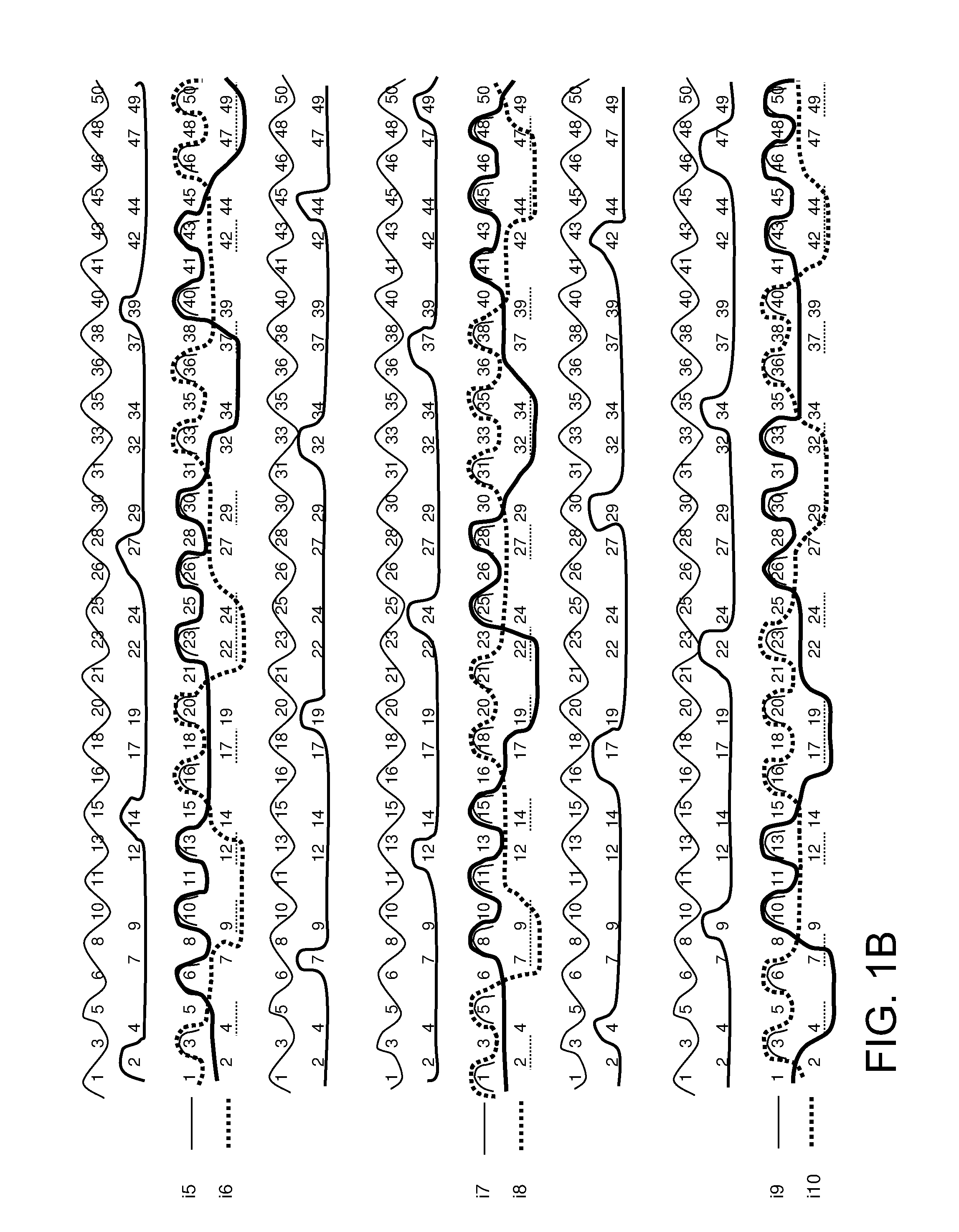Fabric belt for a machine for producing web material, in particular paper or cardboard
a technology of fabric belt and machine, which is applied in the direction of machine wet end, papermaking, textiles and paper, etc., to achieve the effect of reducing the tendency to mark
- Summary
- Abstract
- Description
- Claims
- Application Information
AI Technical Summary
Benefits of technology
Problems solved by technology
Method used
Image
Examples
Embodiment Construction
[0048]The following describes a first design example for a weave structure for a fabric belt for a machine to produce a web material, for example paper or cardboard, with reference to FIGS. 1A-1D, 2 and 3. In the examples illustrated in FIGS. 1A-1D and 2 a fabric belt of this type, for example utilized as a forming fabric, is constructed having two fabric layers 114, and 116. Here, fabric layer 114 represents a web-side, web material carrying first fabric layer. Fabric layer 116 is a machine- or operating-side second fabric layer, which comes into contact with the various rolls supporting or driving the belt. Many of the figures are on multiple pages and each figure number that is followed by a sequence of alphabetic characters denotes that the figure is continued and the weave pattern depicted is continuous even though the figure is on separate pages. A singular reference to a set of pages as a Fig. is only intended to recognize the continuity of the depicted weave pattern.
[0049]FI...
PUM
 Login to View More
Login to View More Abstract
Description
Claims
Application Information
 Login to View More
Login to View More - R&D
- Intellectual Property
- Life Sciences
- Materials
- Tech Scout
- Unparalleled Data Quality
- Higher Quality Content
- 60% Fewer Hallucinations
Browse by: Latest US Patents, China's latest patents, Technical Efficacy Thesaurus, Application Domain, Technology Topic, Popular Technical Reports.
© 2025 PatSnap. All rights reserved.Legal|Privacy policy|Modern Slavery Act Transparency Statement|Sitemap|About US| Contact US: help@patsnap.com



